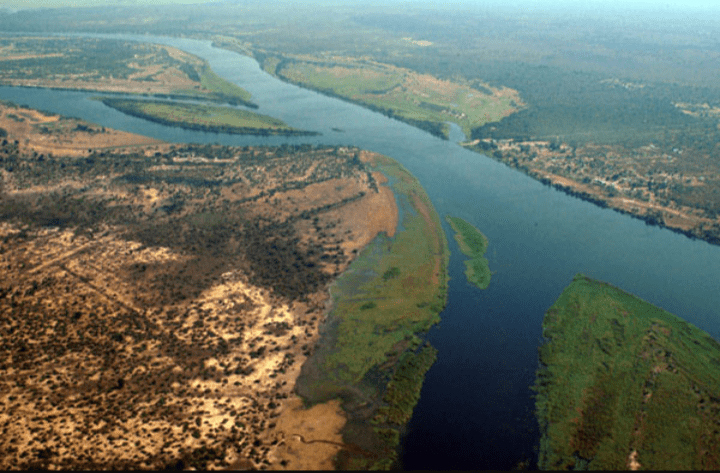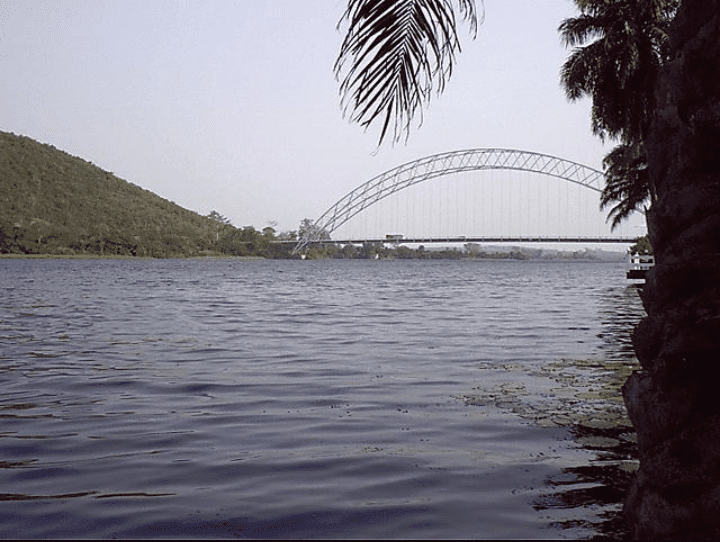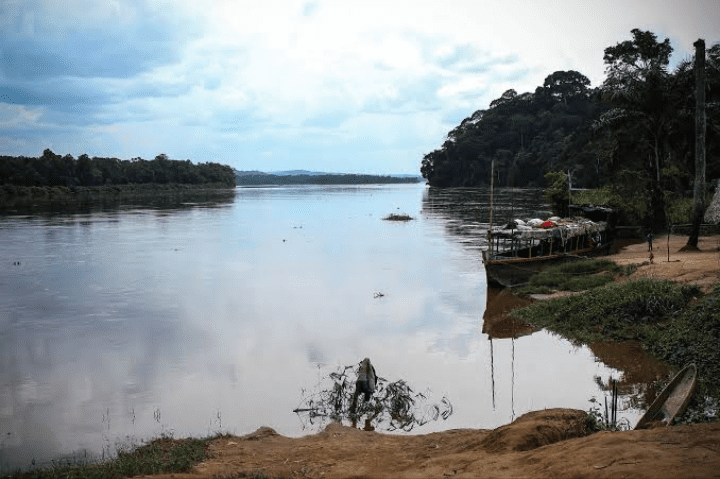Africa boasts a wealth of natural wonders, and among them are its majestic rivers that crisscross the continent, shaping landscapes and sustaining life. These immense waterways serve as lifelines for communities and offer breath-taking beauty. Here are 7 of the largest rivers in Africa:
Read also: African fashion: The unique tapestry of heritage and creativity
1. The Nile
The River Nile is the longest river in the world, flowing northward through north-eastern Africa. It spans approximately 4,135 miles (6,650 kilometres) in length and is a defining geographical feature of the African continent. The Nile River has two main tributaries, the White Nile and the Blue Nile, which converge in Sudan’s capital, Khartoum, to form the Nile proper.
The Nile is historically and culturally significant, with ancient Egypt flourishing along its banks. It provided vital resources for agriculture and transportation, shaping the region’s development. Notable landmarks along the Nile include the Aswan High Dam, the Nile Delta, and the Valley of the Kings, where many ancient Egyptian pharaohs were buried.
Today, the Nile remains a lifeline for millions of people in Egypt and Sudan, supporting agriculture and serving as a major transportation route. Its waters are also harnessed for hydroelectric power generation, making it a critical resource for energy production in the region.

2. Congo River
The Congo River, a prominent waterway in Africa, holds a special place in the continent’s geography and ecological richness. It is the second-largest river in Africa, with a length of 2,920 miles (4,700 kilometers) primarily flowing through the Democratic Republic of Congo (DRC). The Congo River distinguishes itself with its vast drainage basin, which spans approximately 4 million square kilometers, making it the world’s second-largest, surpassed only by the Amazon River.
Ecologically, the Congo River Basin is a treasure trove, boasting the world’s second-largest tropical rainforest. This lush forest is home to an astounding array of biodiversity, including iconic species such as forest elephants, gorillas, and a multitude of unique plant and animal life. The river has long been a vital part of Central African culture and history, serving as a key transportation route for trade and travel. Yet, its strong currents, rapids, and waterfalls have posed formidable challenges for navigation over the centuries.

3. Zambezi River
The Zambezi River is the fourth-longest river in Africa, stretching for about 1,600 miles (2,574 kilometres). It flows through six countries in Southern Africa, including Zambia, Angola, Namibia, Zimbabwe, Botswana, and Mozambique, before emptying into the Indian Ocean.
One of Zambezi River’s most famous features is Victoria Falls, a stunning waterfall that is one of the largest and most famous in the world. The falls are a UNESCO World Heritage site and a major tourist attraction, drawing visitors from around the globe to witness their majestic beauty.
The Zambezi River is not only renowned for its natural wonders but also for its ecological significance. It sustains diverse wildlife and provides a lifeline for countless communities along its banks, supporting agriculture, transportation, and fishing. The river’s flow is harnessed for hydroelectric power generation, making it an essential resource for energy production in the region.

4. Orange river
The Orange River, also known as the Gariep River, is the longest river in South Africa, spanning approximately 1,367 miles (2,200 kilometers). It flows through South Africa and Namibia, with its source high in the Drakensberg Mountains in Lesotho.
This river is named after the Dutch royal House of Orange-Nassau and has historical significance as it was explored by European colonists in the 18th century. The Orange River basin supports a range of ecosystems, from arid regions to fertile valleys. It plays a crucial role in supporting agriculture, particularly in the arid regions it traverses.

5. Senegal River
The Senegal River spans approximately 1,086 miles and flows through four West African countries: Senegal, Mali, Mauritania, and Guinea. Originating in Guinea’s Fouta Djallon highlands, it flows into the Atlantic Ocean, serving as a natural border between Senegal and Mauritania.
One of the defining features of the Senegal River is its essential role in providing water and sustenance to the surrounding regions, particularly in arid areas. It is ecologically diverse, featuring wetlands, savannas, and important bird habitats. It has been the focus of conservation efforts to protect its biodiversity and ensure sustainable resource management.

6. Volta river
The Volta River, spanning around 1,579 kilometers (981 miles), flows through multiple West African countries like Burkina Faso, Ghana, and Cote d’Ivoire, significantly influencing the region’s landscapes and economies.
One of the most notable features of the Volta River is the Akosombo Dam, located in Ghana. The dam has created the vast Lake Volta, one of the world’s largest artificial reservoirs. This reservoir plays a vital role in hydroelectric power generation, supplying electricity to Ghana and neighbouring countries in the region. The Volta River basin is agriculturally rich, supporting crop cultivation, fishing, and transportation.
Read also: Serena and Venus Williams make history as the first women to own an NFL team

7. Kasai river
The Kasai River flows through the Democratic Republic of Congo, particularly in the southern and central regions of the country. It is an important tributary of the mighty Congo River, one of Africa’s longest and most powerful rivers.
The defining feature of the Kasai River is its confluence with the Congo River near the city of Kinshasa. This confluence plays a crucial role in the formation of the lower Congo River, enhancing its flow and navigability.



